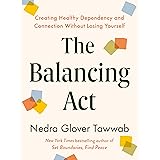Does the digital world, as depicted in the internet addiction documentary above, truly have a hold on us? The assertion that “everyone seems to be addicted to the internet one way or another” resonates deeply with a contemporary society increasingly tethered to screens. While the simple counsel to “use it in moderation” and “don’t let it control your life” offers a foundational truth, the complexity of problematic internet use (PIU) extends far beyond facile advice. A deeper understanding of this behavioral phenomenon is necessitated, exploring its definitions, neurobiological underpinnings, societal prevalence, and the robust strategies developed for intervention.
1. Demystifying Digital Compulsion: Defining Problematic Internet Use
The concept of internet addiction, often referred to by clinicians and researchers as Problematic Internet Use (PIU) or Compulsive Internet Use, is a nuanced behavioral pattern. It is characterized by excessive and uncontrolled engagement with digital platforms, leading to significant impairment in an individual’s life. Unlike substance abuse, where a chemical dependency is clear, PIU is an impulse control disorder where the ‘substance’ is the online activity itself. Diagnosis typically involves a cluster of criteria, including preoccupation with the internet, withdrawal symptoms when offline, tolerance (needing more time online for satisfaction), and a persistent desire to cut down or control usage without success.
While the World Health Organization (WHO) has recognized Gaming Disorder as a diagnosable condition in its International Classification of Diseases (ICD-11), a broader “Internet Addiction Disorder” (IAD) is still being investigated for official inclusion in diagnostic manuals like the DSM-5. Nevertheless, the clinical community largely acknowledges the existence of these problematic behaviors and the distress they cause. The differentiation between heavy but functional internet use and genuine PIU is paramount, often being distinguished by the degree of functional impairment experienced by the individual across various life domains.
2. The Neurobiological Underpinnings of Digital Engagement and Compulsion
Understanding the brain’s response to internet use provides critical insights into why moderation is so challenging for some individuals. The reward system, primarily involving dopaminergic pathways, is profoundly implicated in compulsive internet behaviors. When individuals engage in online activities such as receiving likes on social media, achieving milestones in online games, or discovering novel information, a surge of dopamine is released. This neurochemical process reinforces the behavior, making it more likely to be repeated.
Over time, chronic activation of these reward pathways can lead to neuroadaptations, where the brain becomes less sensitive to natural rewards and requires increasingly intense digital stimulation to achieve the same level of satisfaction. This phenomenon, often termed “tolerance” in addiction paradigms, is a key component of PIU. Furthermore, the prefrontal cortex, responsible for executive functions like impulse control and decision-making, can be negatively impacted, further compromising an individual’s ability to self-regulate their internet usage. Brain imaging studies have reportedly shown alterations in brain structures and functions in individuals with PIU, mirroring those observed in traditional substance addictions.
3. Prevalence and Sociodemographic Trends in Compulsive Internet Use
While precise global statistics on PIU remain variable due to differing diagnostic criteria and methodologies, estimates consistently indicate a significant public health concern. Research suggests that prevalence rates of PIU can range from 0.3% to as high as 10% in the general population, with specific demographics showing higher vulnerability. For instance, adolescents and young adults are often cited as particularly susceptible, owing to developmental factors in the prefrontal cortex and their immersion in digital environments from an early age.
Certain online activities are also found to correlate more strongly with problematic patterns. Online gaming, social media, and compulsive information seeking have been identified as primary conduits for PIU. A 2021 study, for example, suggested that approximately 3-5% of internet users in Western countries experience symptoms consistent with PIU, with higher rates observed in Asian countries, potentially reaching up to 15% in specific youth populations. These figures underscore the widespread impact of digital technologies and the urgency of developing robust preventative and interventional strategies tailored to various age groups and cultural contexts.
4. The Multifaceted Impact of Excessive Digital Engagement
The repercussions of uncontrolled internet use extend far beyond mere distraction, permeating various aspects of an individual’s well-being. Psychologically, PIU is frequently comorbid with other mental health conditions, including anxiety, depression, and attention-deficit/hyperactivity disorder (ADHD). Sleep patterns are often disrupted, leading to chronic fatigue, impaired cognitive function, and diminished academic or occupational performance. Socially, real-world relationships can deteriorate as virtual interactions replace face-to-face communication, fostering isolation despite being “connected” online.
Physical health is also susceptible to negative impacts, with sedentary lifestyles contributing to obesity, musculoskeletal problems, and vision strain. The financial implications, particularly in the context of online gaming or shopping, can also be severe, leading to debt and economic instability. Thus, the advice to “don’t let it control your life” is rooted in the very real and significant detriments that can accrue when digital interaction shifts from being a tool to becoming a primary, all-consuming focus, disrupting the delicate balance of life.
5. Cultivating Digital Wellness: Strategies for Healthy Moderation and Intervention
Achieving meaningful moderation in internet use involves a multi-pronged approach that combines individual self-regulation with environmental adjustments and, when necessary, professional intervention. A fundamental step involves establishing clear boundaries and ‘digital hygiene’ practices. This can include setting specific times for online activities, implementing ‘digital detox’ periods, and utilizing technology tools designed to monitor and limit screen time. Cognitive-behavioral therapy (CBT) has emerged as a particularly effective therapeutic modality for PIU, assisting individuals in identifying triggers, challenging maladaptive thoughts, and developing healthier coping mechanisms.
Support groups and family counseling are also instrumental in fostering a supportive environment for recovery and sustained moderation. For individuals struggling with severe forms of internet addiction, more intensive interventions, potentially involving residential treatment programs, may be indicated. The goal is not necessarily complete abstinence from the internet, which is often impractical in modern society, but rather the establishment of a balanced, mindful, and functional relationship with digital technology, ensuring that its benefits can be harnessed without succumbing to its potential pitfalls. Studies on CBT for PIU have shown success rates upwards of 60-70% in reducing problematic behaviors and improving overall psychological well-being.











